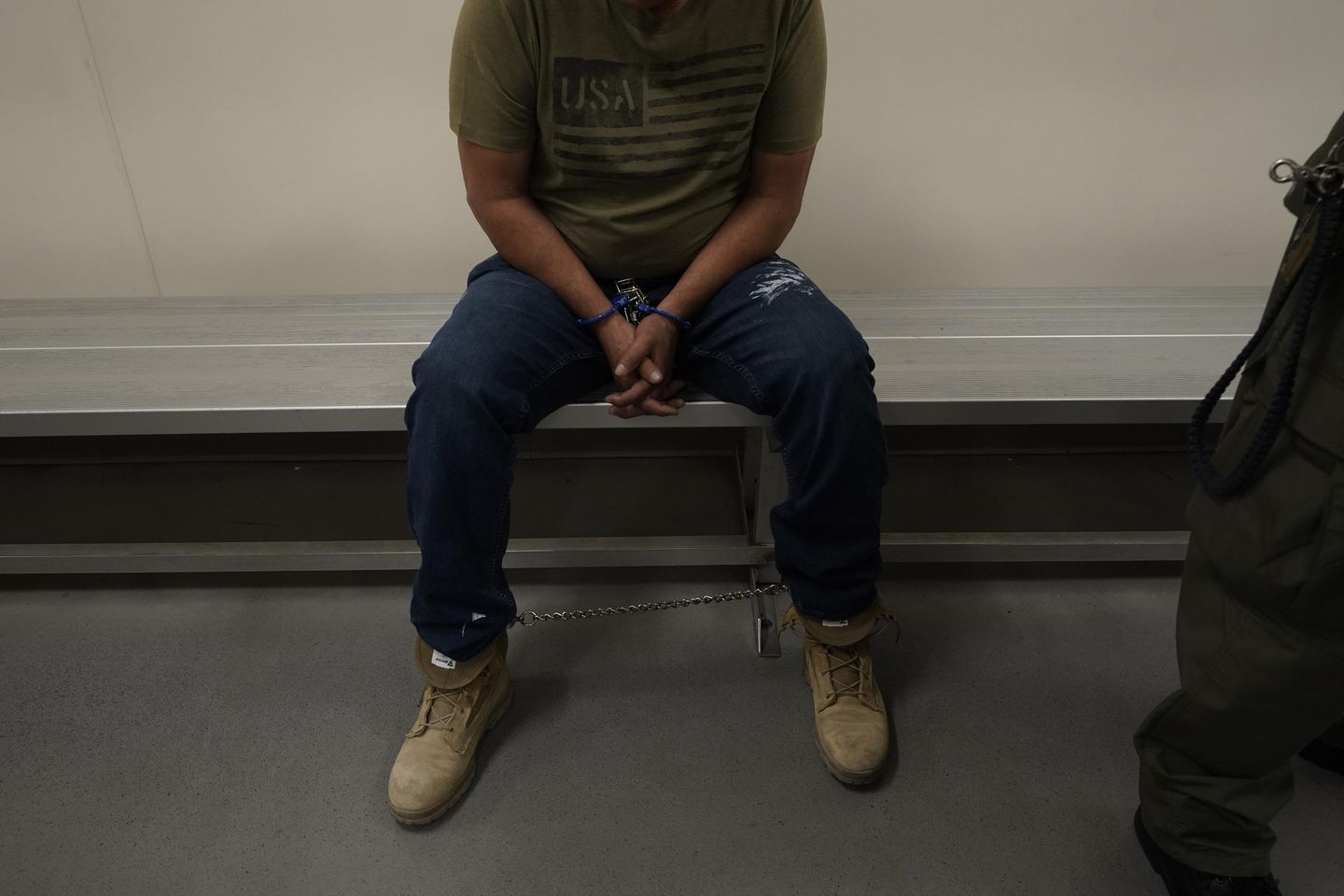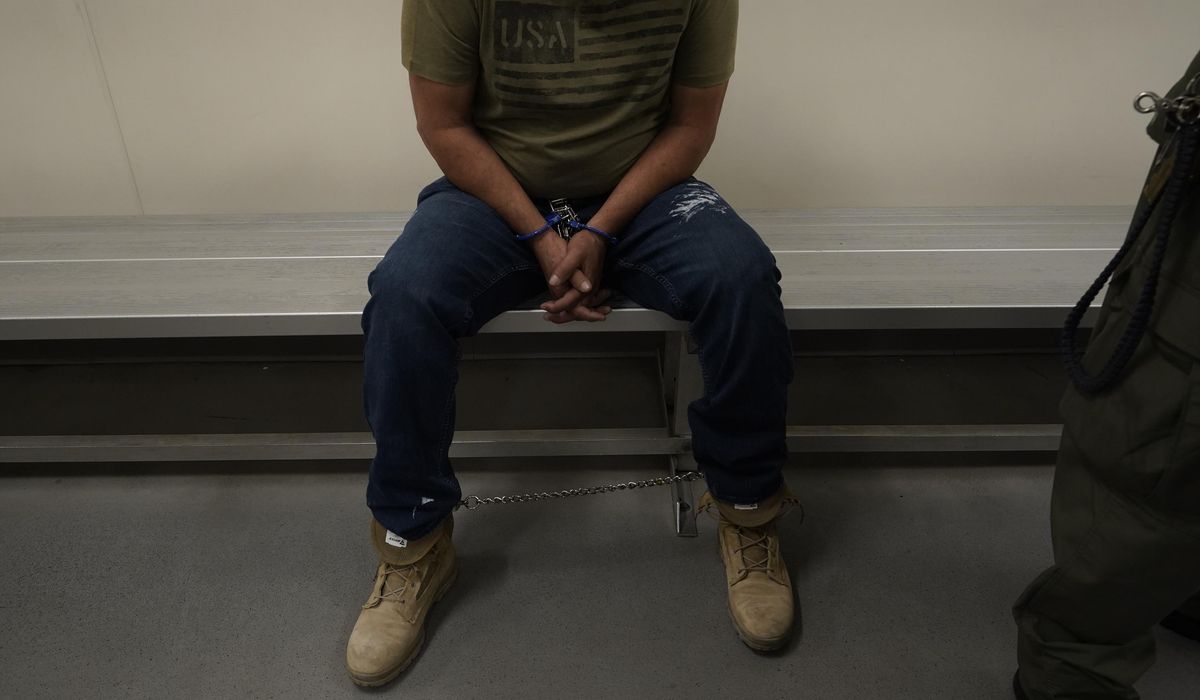

The U.S. Marshals Service is drafting a sanctuary policy that would limit the agency’s ability to hold illegal immigrants for pickup by ICE, The Washington Times has learned.
Under the policy, marshals would not be able to hold illegal immigrants for pickup by U.S. Immigration and Customs Enforcement on the say-so of an immigration warrant, or “detainer” request. Once the Marshals Service is finished processing an immigrant for its custody purposes, the person is to be released even if ICE has asked for a hold.
Officials said the policy is still in draft form, though The Times knows of one jurisdiction in Florida where it has already been implemented, according to a memo sent to employees this summer.
“Per our management staff, effective immediately, we will NOT house a prisoner based solely on an administrative immigration detainer,” a deputy wrote to fellow deputies in the Fort Lauderdale office.
“We will relay the reason that the inmate is being released from USMS custody and that the USMS cannot hold the subject beyond the standard out-processing time, nor may we transport the subject for DHS,” the deputy added.
The office said marshals will give “a reasonable amount” of advance notice so ICE can try to send officers to detention facilities in time to pick up immigrants.
SEE ALSO: Biden administration abolishes ICE labor union
The Marshals Service houses about 60,000 people on any given day. Some of them are deportable migrants, and ICE wants to take custody when they are released.
ICE officers told The Washington Times that the policy change will be a blow.
They said a bigger worry is that other Justice Department agencies will follow suit. The Federal Bureau of Prisons turns over an even larger number of migrants to ICE.
The Marshals Service headquarters in Washington confirmed it is drafting a new policy.
“The proposed updates incorporate language clarifying the agency’s long-standing practice of not holding prisoners beyond a judicial order. The USMS is not authorized to hold prisoners beyond a judicial order requiring their release or the expiration of a sentence imposed,” the service said.
The service didn’t disclose what prompted the draft policy but said it considered the update a confirmation of current practices.
SEE ALSO: July border stunner: Enough fentanyl to kill every American
“No changes have been made to the policy limiting cooperation with ICE or any law enforcement entity,” the service said.
Current and former ICE officials said the policy is indeed a shift.
“It has always been USMS policy to honor immigration detainers, going back to when both USMS and then-INS were both Justice Department agencies,” said Dan Cadman, a former senior ICE official and now a fellow at the Center for Immigration Studies.
He called the Marshals Service‘s claim that it wasn’t a change in policy “a case of policy spin approaching bald-faced lie.”
“Keep in mind that if someone’s in USMS custody, it’s because they’ve committed a federal violation, and almost certainly a felony (or possibly several),” he said. “This is just another example of the pernicious politicization of Merrick Garland’s Justice Department and Alejandro Mayorkas’ Homeland Security Department.”
Mr. Cadman said the Marshals Service must have coordinated with Homeland Security on the changes, which suggests that ICE didn’t object.
The Times reached out to ICE, which referred questions back to the Marshals Service.
ICE detainers are the bread and butter of the immigration agency’s work. They are requests to fellow law enforcement agencies to hold immigrants for pickup for potential deportation after the other agency is finished with them.
For example, a state prison would be asked to turn over targets who have completed their sentences. Local police are asked to hold immigrants they arrest but don’t immediately jail.
Deportations are a civil matter, not a criminal penalty, and the detainer requests are warrants signed by deportation officers and aren’t approved by a federal court.
For many state and local law enforcement agencies, that fact has made detainers optional — and the agencies have decided to ignore them. Indeed, the use and efficacy of detainers have dropped in recent years.
ICE issued 177,147 detainers in 2018 and 165,487 in 2019, but just 122,233 in 2020. The number of detainers honored in 2020 dropped by 26%.
The agency declined to release its numbers for 2021.
The Marshals Service secures federal courthouses, tracks down fugitives and, relevant to ICE’s work, houses and transports people awaiting trial and handles processing if a judge orders their release.
If an immigrant is ordered released by a judge but is subject to an ICE detainer, the Marshals Service would routinely hold the person for pickup. ICE requests up to 48 hours of extra time.
The Marshals Service also works with ICE on space for ICE’s detainees. That allows the immigration agency to use beds under contracts between the Marshals Service and state and local prisons and jails.
The policy in development would make the Marshals Service a limited sanctuary. It would still allow notification but would deny the full level of compliance ICE seeks by refusing to detain for pickup.
The Marshals Service has been following a sanctuary-style policy in the District of Columbia for two years after a federal judge ruled against ICE detainers.
Senior Judge Royce C. Lamberth said the Marshals Service doesn’t have independent powers to enforce immigration laws. He said its chief duty is to carry out orders of federal courts.
Because ICE isn’t a part of the courts and its detainers aren’t issued under any court’s purview, the Marshals Service cannot justify holding an immigrant based on a detainer.
Judge Lamberth’s ruling was confined to the District of Columbia.
It’s not clear what role the D.C. changes are playing in the Marshals Service‘s broader policy update.
